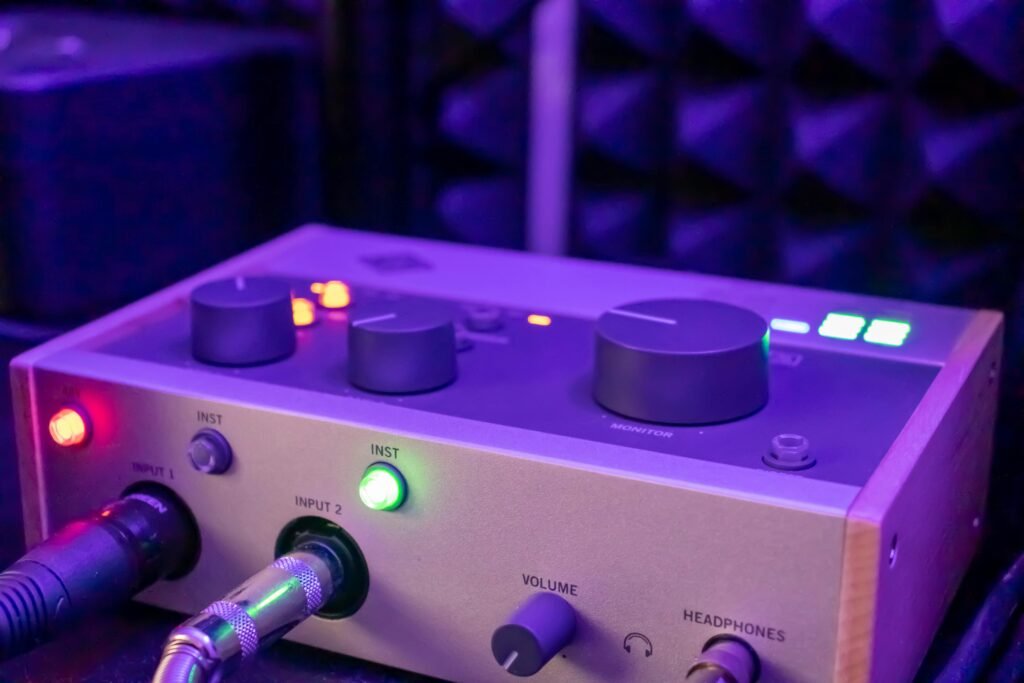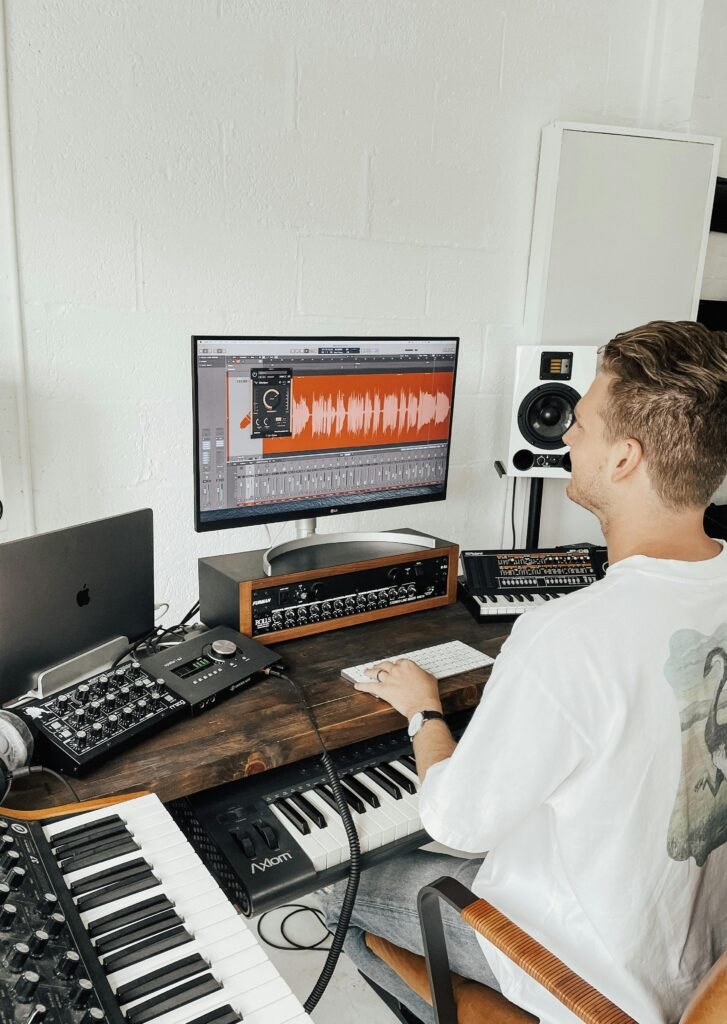As a professional composer deeply involved in the realm of music production, I understand the pivotal role that audio interfaces play in shaping the quality and efficiency of recording setups. Audio interfaces serve as the bridge between analog and digital domains, allowing musicians and producers to capture, process, and manipulate audio signals with precision and clarity. With a myriad of options available in the market, selecting the right audio interface for your recording setup can be a daunting task. In this comprehensive guide, I will navigate through the diverse landscape of audio interfaces, offering insights and advice to help you make informed decisions and optimize your recording workflow.

Understanding the Importance of Audio Interfaces
Audio interfaces are essential components of any modern recording setup, serving multiple functions that are critical to the music production process. Here are some key reasons why audio interfaces are indispensable:
- Analog-to-Digital Conversion: Audio interfaces convert analog audio signals from microphones, instruments, and other sound sources into digital data that can be processed and recorded by computers or digital audio workstations (DAWs).
- Digital-to-Analog Conversion: Conversely, audio interfaces convert digital audio data back into analog signals for playback through speakers, headphones, or monitoring systems, ensuring accurate reproduction of recorded audio.
- Input and Output Connectivity: Audio interfaces provide a variety of input and output options, including microphone preamps, instrument inputs, line-level inputs, headphone outputs, and monitor outputs, allowing for versatile connectivity with various audio sources and devices.
- Signal Processing and Monitoring: Many audio interfaces offer built-in signal processing features such as EQ, compression, and reverb, as well as monitoring capabilities for low-latency headphone monitoring and speaker calibration, enhancing the recording and mixing experience.
Types of Audio Interfaces
Audio interfaces come in a variety of forms and configurations to suit different recording setups and requirements. Here are some common types of audio interfaces:
- USB Audio Interfaces: USB interfaces are the most popular and widely used type of audio interface, offering plug-and-play connectivity with computers via USB ports. They are affordable, portable, and suitable for home studios, solo musicians, and podcasters.
- Thunderbolt Audio Interfaces: Thunderbolt interfaces offer high-speed data transfer and low-latency performance, making them ideal for professional recording studios and demanding audio production tasks such as multitrack recording and high-resolution audio processing.
- PCIe Audio Interfaces: PCIe interfaces are internal audio cards that connect directly to a computer’s PCIe slot, providing high-bandwidth audio connectivity with minimal latency and maximum performance. They are commonly used in desktop workstations and dedicated audio production computers.
- iOS Audio Interfaces: iOS interfaces are designed for use with iOS devices such as iPhones and iPads, enabling mobile recording and production capabilities for musicians, producers, and content creators on the go.
Factors to Consider When Choosing an Audio Interface
When selecting an audio interface for your recording setup, several factors should be taken into account to ensure compatibility, functionality, and performance. Here are some key considerations:
- Number and Type of Inputs and Outputs: Determine the number and type of inputs and outputs you need based on your recording requirements, such as microphone inputs, instrument inputs, line-level inputs, headphone outputs, and monitor outputs.
- Preamp Quality and Gain: Pay attention to the quality of built-in microphone preamps and their gain range, as they can significantly impact the sound quality and performance of your recordings, especially when using condenser microphones or low-output dynamic microphones.
- Sample Rate and Bit Depth: Consider the supported sample rates and bit depths of the audio interface, as higher sample rates and bit depths offer better audio fidelity and resolution, especially for professional recording and mastering applications.
- Compatibility and Connectivity: Ensure compatibility with your recording setup, including your computer platform (Windows, macOS, iOS), operating system version, and DAW software. Check the available connectivity options (USB, Thunderbolt, PCIe) and choose the interface that best suits your setup and workflow.
- Latency Performance: Look for audio interfaces with low-latency performance to minimize delay between input signals and output monitoring, providing a responsive and natural recording and mixing experience, especially during live tracking and overdubbing sessions.
- Portability and Form Factor: Consider the portability and form factor of the audio interface, especially if you need to transport it between different locations or use it in compact studio setups. Choose a lightweight and compact interface that fits your space and workflow requirements.
- Additional Features and Software: Explore additional features and bundled software included with the audio interface, such as DSP effects, virtual instruments, and recording plugins, which can add value and functionality to your recording and production setup.
Popular Audio Interface Brands and Models
With a plethora of audio interface brands and models available in the market, it’s essential to research and compare different options to find the best fit for your recording needs. Here are some popular audio interface brands and models widely praised for their quality, performance, and versatility:
- Focusrite Scarlett Series: The Focusrite Scarlett series offers a range of USB audio interfaces known for their high-quality preamps, low-latency performance, and user-friendly design, making them ideal for entry-level and intermediate recording setups.
- Universal Audio Apollo Series: The Universal Audio Apollo series features Thunderbolt audio interfaces renowned for their premium preamps, onboard DSP processing, and extensive plugin ecosystem, catering to professional studios and advanced recording applications.
- PreSonus Studio Series: The PreSonus Studio series includes USB and Thunderbolt audio interfaces known for their versatile connectivity, flexible routing options, and intuitive software integration, providing a complete recording solution for musicians and producers.
- RME Audio Fireface Series: The RME Audio Fireface series offers PCIe and USB audio interfaces prized for their exceptional sound quality, low-latency performance, and robust build quality, making them preferred choices for professional audio engineers and demanding recording environments.
- Apogee Electronics Duet Series: The Apogee Electronics Duet series comprises iOS and Thunderbolt audio interfaces acclaimed for their pristine audio conversion, elegant design, and seamless integration with Apple devices, perfect for mobile recording and production setups.

Conclusion
In conclusion, audio interfaces play a pivotal role in modern music production, serving as essential tools for capturing, processing, and recording audio with precision and clarity. By understanding the importance of audio interfaces, exploring the different types and configurations available, considering key factors when choosing an interface, and researching popular brands and models, you can select the right gear to optimize your recording setup and enhance your creative workflow. Whether you’re a beginner building your first home studio or a seasoned professional upgrading your recording rig, investing in a high-quality audio interface is a crucial step towards achieving professional results and unlocking your full creative potential in the world of music production.